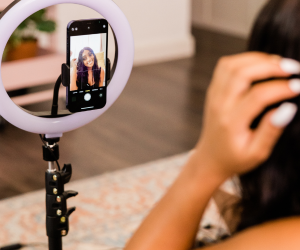Understanding Deinfluencing: Navigating the Complex Landscape of internet Influence
Understanding Deinfluencing: Navigating the Complex Landscape of internet Influence
Blog Article
Lately, the term "deinfluencing" has emerged as a response to the pervasive influence of social media and online platforms. While traditional influencers have played a significant role in shaping public opinions, deinfluencing seeks to address the potential negative impact of unchecked influence and empower individuals to reclaim treatments for their digital experiences.
Deinfluencing is actually the conscious effort to cut back or get rid of the influence that external entities, for example influencers, brands, or algorithms, dress in one's thoughts, behaviors, and decision-making processes. It's a response to the realization that our online experiences are often curated and manipulated, ultimately causing a sense of loss in autonomy and authenticity.
One of the main drivers behind the deinfluencing movement will be the growing knowing of the algorithms utilized by social media platforms. These algorithms are made to keep users engaged by showing them content that aligns with their preferences and interests. While this can create a personalized online experience, in addition, it creates echo chambers, reinforcing existing beliefs and limiting experience of diverse perspectives.
Deinfluencing encourages visitors to take a more active role in curating their online content. This might involve diversifying the sources of information they consume, deliberately exposing themselves to opposing viewpoints, and critically evaluating this content they encounter. By doing this, individuals can liberate from the echo chamber effect and make more informed decisions based on a broader array of perspectives.
Another facet of deinfluencing involves reassessing the function of social media influencers. While influencers provides valuable content and insights, deinfluencing prompts people to question the authenticity of those online personas. It encourages a shift away from blindly following influencers and instead advocates to get a more discerning method of the content we consume. This might involve unfollowing accounts that contribute to feelings of inadequacy or negatively impact mental well-being.
Deinfluencing also addresses the commercial part of online influence. Brands often leverage influencers to advertise their products or services, blurring the lines between genuine recommendations and paid endorsements. Deinfluencing prompts individuals to critically evaluate the motivations behind online content to make conscious decisions concerning the products and brands they elect to support.
Ultimately, deinfluencing is all about reclaiming control over one's digital life. It's really a call to action for people to be conscious of the influence that surrounds them and take intentional steps to shape their online experiences in a manner that aligns with their values and priorities. This could involve setting boundaries on social networking usage, actively curating the content they consume, and being vigilant in regards to the impact of internet influence on their thoughts and behaviors.
In conclusion, deinfluencing on tiktok is a response to the evolving landscape of internet influence. By actively engaging with the content we come across, questioning the motivations behind influencers and brands, and diversifying our sources of information, we can regain a feeling of autonomy and authenticity in our digital lives. Deinfluencing empowers people to navigate the complex realm of online influence with intentionality and purpose.